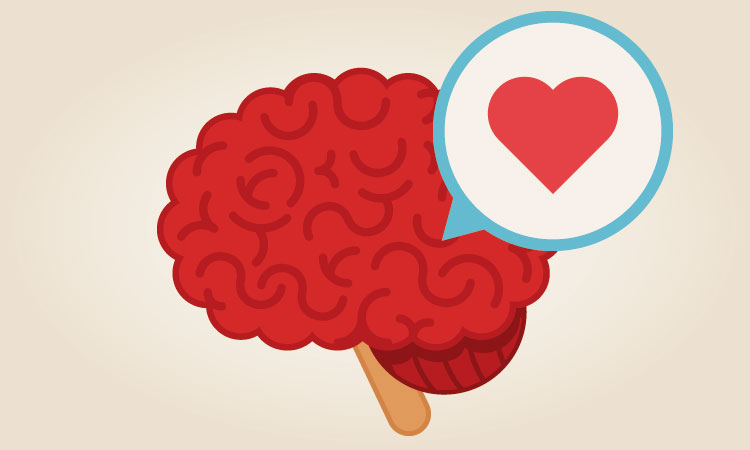How to strengthen the heart-brain connection for better health
Today, I will be speaking at the NYC Go Red for Women Symposium about how the emotions related to stress have become habitual, so it’s part of our automatic programing; it’s now behavior we demonstrate without thinking about it. Once people understand the science of how those habits and behavior develop, the easier healing becomes.
In school, you probably heard that the heart responds to commands that the brain sends to it through neural signals. But, what’s less commonly taught is that the heart sends its own signals to the brain. In fact, it sends more notifications to the brain than the brain sends to the heart. Not only does the brain hear more from the heart, but the heart also has a major impact on how your brain functions. The heart is especially persuasive when it comes to emotional processing. It also influences the faculties that require more cognitive power such as your attention, memory, perception and problem-solving abilities.
Research explains the heart-brain connection
Researchers have been looking into how the heart and brain interact with each other for the past 40 years. Early research into these two body parts mainly examined the influence of a heart’s activity on the brain over a short amount of time. At most, researchers assessed several consecutive heartbeats. Scientists expanded the research to the heart and mind connection by considering large-scale heart activity patterns and how they affect the functionality of the brain.
Research shows that different heart activity patterns have specific effects on emotional and cognitive function. When you’re feeling negative emotions or experiencing a stressful situation, your heart’s rhythm pattern will be erratic and chaotic, causing the corresponding neural signals that travel from the heart to inhibit your higher cognitive functions. When this happens, your ability to think clearly, learn new stuff, remember things and make good decisions becomes limited.
So, if you often act impulsively or foolishly when you’re experiencing stress, now you know why. Along with this, your heart’s notifications to the brain during stressful situations or negative events actually intensifies the emotional effect on your on your brain, worsening the overall effect of the stress.
On the other hand, when you experience positive emotions, your heart’s communication to the brain is more orderly and stable, supporting cognitive function while encouraging positive feelings and emotional stability. Because the heart has this power over your brain, learning how to produce increased heart rhythm coherence will noticeably impact how you think, feel, perform and perceive. Gaining access to heart rhythm coherence benefits your entire body.
Heart rate variability: a major indicator of health and fitness
Before they knew better, science buffs used to think that a heart at rest functioned like a metronome. Basically, they believed that hearts always operated at a regular, steady pace. Research found that this was not the case. Instead of beating at a monotonously regular rhythm, healthy hearts operate irregularly. Even when your heart is resting, the time intervals between beats changes constantly. In the research world, the beat-to-beat variation is referred to as heart rate variability, or HRV.
To physicians and scientists, your HRV is a major indicator of your fitness and health. It reveals your ability to adjust to stress and environmental demands. Compare the changing beats of your heart to how beach volleyball players shift their stance when the other team is preparing to serve the ball. A healthy heart will shift its stance and be responsive, primed, resilient and ready to react when you need it to.
HRV is also an indicator of aging. Your HRV is best when you’re young. As the years pass, the range of variation in your resting heart rate lessens. While an age-related HRV decline is supposed to happen, an abnormally low HRV for your age group is connected to a higher risk of health problems and to premature mortality. Researchers have observed that a low HRV is present in people who suffer from different ailments and diseases. To bring a low HRV back to a healthy level, you can decrease stress-produced wear and tear on your nervous system and support your body’s natural regenerative processes.
How can you strengthen your heart and brain connection?
Dr Joseph Mercola notes that to strengthen your heart and brain connection, you’ll need to practice ways to intentionally experience sincere positive emotions. This may include caring, appreciation for someone or something, and compassion. When your heart experiences these kinds of emotions, its rhythm becomes more harmonious and coherent. As your heart processes positive emotions, it shares this information with the rest of your body.
By making your body and brain work better, you’ll feel better and perform at a higher level. When you generate prolonged positive emotions, those in the research community refer to it as psychophysiological coherence, characterized by improved harmony and order in your mental state and body processes.
When you’re able to achieve heart rhythm coherence, several different bodily systems synchronize to the rhythm your heart produces. This state also causes increased synchronization between your heart and brain.
An important distinction
Keep in mind that when you reach the state of coherence, it is physiologically and psychologically different from a state of relaxation. In considering the physiological level, relaxation is exemplified by a general reduction of autonomic outflow, which causes a lower HRV. Relaxation also brings about a change in the autonomic nervous system balance, increasing the body’s parasympathetic activity.
Because coherence causes an increase in the parasympathetic activity, it features a major element of the body’s response to relaxation, but coherence is different in that it fluctuates at a natural resonant frequency, bringing about more harmony and synchronization in your body’s nervous system. It also positively impacts the dynamics between the heart and the brain.
Breathing plays a role
Similar to relaxation, when it comes to generating a state of coherence, breathing plays a role. Use breathing patterns to control your heart’s rhythm. To do so, you’ll need to breathe regularly and slowly using a 10-second rhythm. Breathe in for 5 seconds. Then, breathe out for 5 seconds. By breathing rhythmically at this count, you’ll instigate a shift away from a stressful emotional state and into increased coherence. This type of breathing can require considerable mental effort. Because of this, some people struggle to maintain it, so it is something you should practice until it becomes a natural reaction to stressful situations.
As important as the breathing technique is, keep in mind that it is not the main way to strengthen the heart and mind connection. The main focus of gaining this control is to intentionally produce a heartfelt positive emotional state. By changing your emotional state, you’ll significantly impact your body’s natural regenerative process.
When you experience genuine positive emotions, you’ll activate your body’s natural resonant frequency, allowing coherence to materialize. It also makes it possible for you to maintain this state naturally, without reaching into your mental focus to control your breathing rhythm. Your heart’s rhythmic activity impacts your breathing rate and its patterns. When your heart’s rhythm shifts into coherence because of a positive emotional change, your breathing rhythm automatically changes with it. In fact, it synchronizes with your heart while reinforcing and steadying the shift toward full-body coherence.
Along with causing a positive emotional state, coherence provides additional benefits. For you, this may include deeper emotional and perceptual changes, better intuition and creativity. You may notice performance, cognitive improvements and positive changes in your body’s hormonal balance.
Learning how to initiate and sustain coherence
Use the 10-second breathing rhythm as a training aid. Once you feel comfortable producing coherence through the breathing method, start focusing your breathing on a positive attitude or feeling, but breathe it through your heart area. If you practice the technique often enough, you’ll be able to shift your state into one of coherence by activating a positive feeling.
When changes happen in the way your body functions during the coherence state, they usually revolve around modifications in your heart’s activity pattern.
A key element to the emotional system
While Western medicine used to think of the heart as simply the organ that pumps blood through the body’s system, research shows the heart plays a major role in your body’s emotional system. Signals from your heart have an impact on how you perceive things and on your body’s cognitive function. There is still much to learn about the connection between the heart activity patterns and the brain, but science now supports the idea that the heart has an impact on our feelings, thoughts and insights.
Strengthen the connection between your heart and brain to gain more control over your emotions and how well your body operates.

Rose Caiola
Inspired. Rewired.



2 Comments
Angela O’Malley
Dear Rose,
I thank you profoundly for this article on the hearts impact on the brain. I had a light bulb moment whilst reading it. The paragraph entitled ‘an important distinction’ struck me as very important. I work with a modality called Bowen Therapy that naturally shifts a client into PNS mode. I spend time before a session ‘striking a chord’ with my clients. Your explanation has helped me to appreciate why this connection time is so vital and produces profound results. I am blessed with many hugs. Thanks so much for sharing your wisdom Rose.
Rose Caiola
Angela,
You are very welcome. I’m so glad you enjoyed the piece.
xoxo